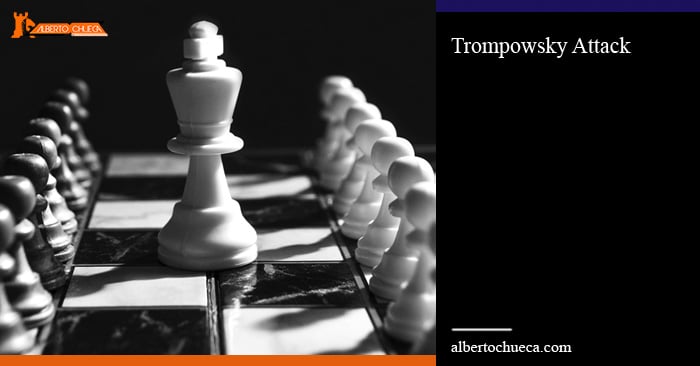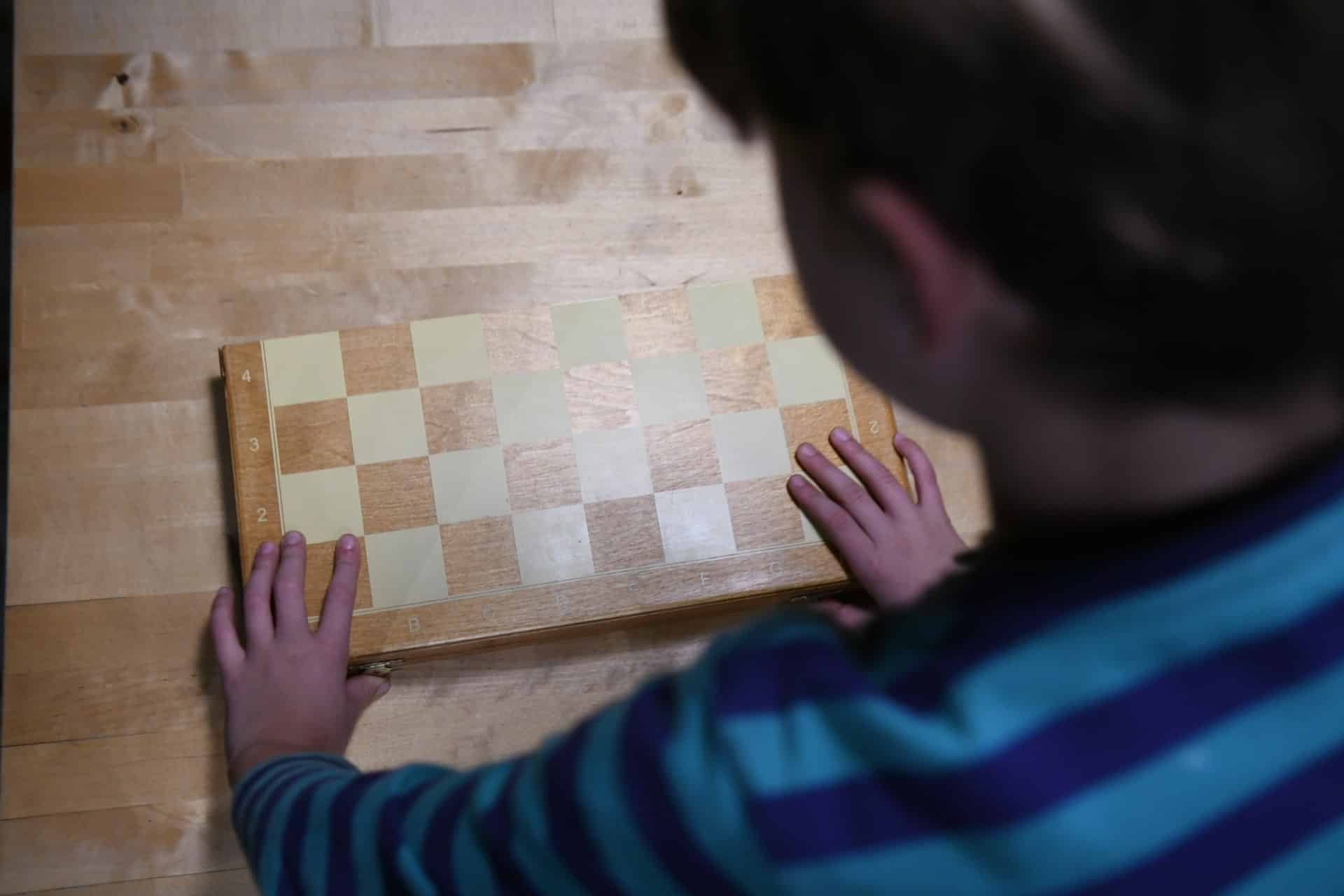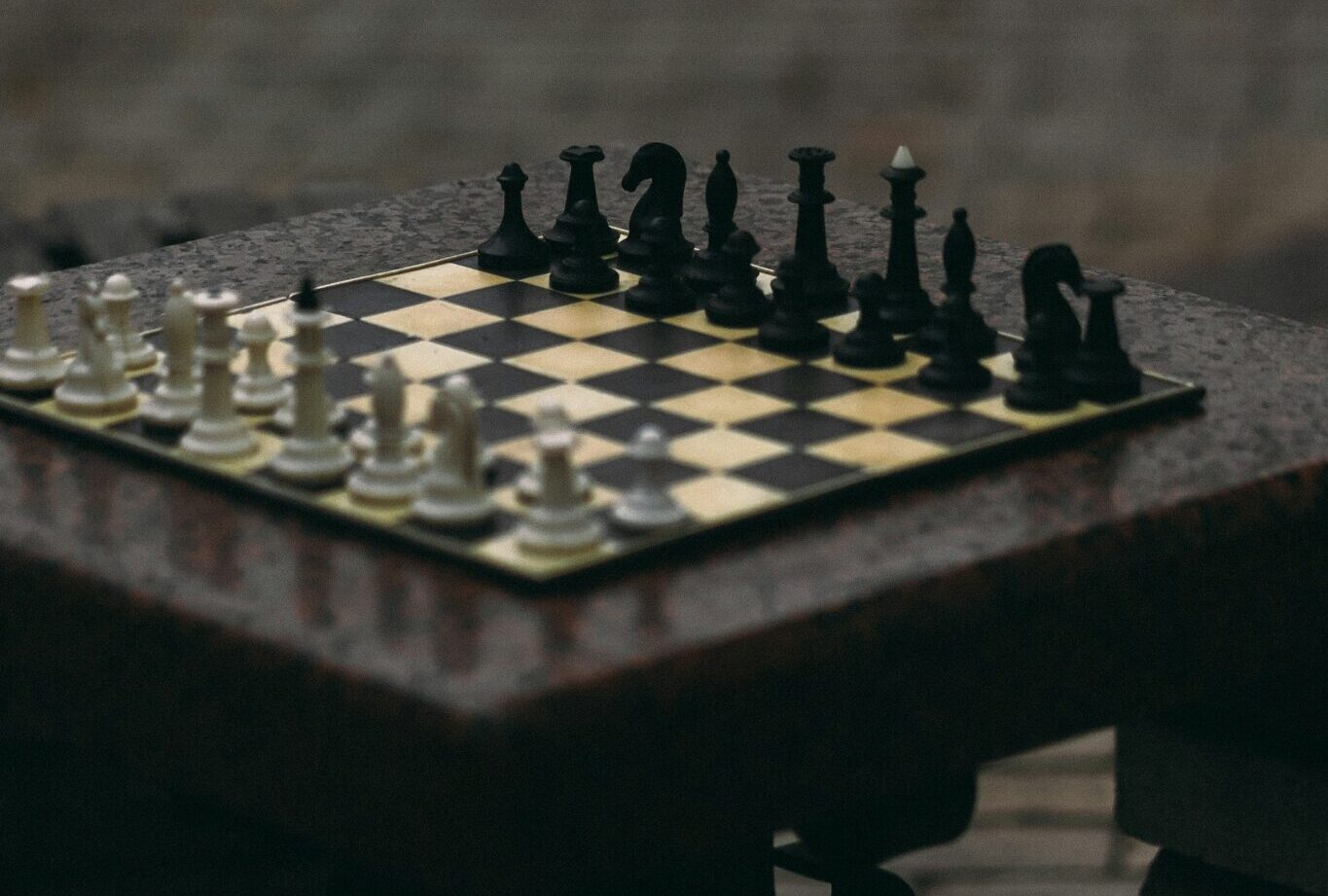Table of Contents
Trompowsky Attack
In this post, we study a very good system to play as White: Trompowsky Attack (named after the Brazilian master: Octavio Trompowsky). This Opening is good for players who like to avoid too theoretical lines. In general, the middlegames are more or less balanced, but as Trompowsky Attack is not mainline, very often Black is not familiar with the positions and this could mean a small additional advantage for the first player, who, by the way, will know much better the subtleties of the positions.
We have Trompowsky Attack on the board after the moves
1.d4 Nf6 2.Bg5
The idea of White’s second move is to threaten the capture of the knight on f6, damaging Black’s structure since early in the game. The second player could think that this threat is not particularly scary (White is also losing the two Bishops), however, if Black does not understand very well the position, they could stay strategically lost.
Another good thing with Trompowsky Attack is that when White plays 1.d4 and 2.Bg5, they are avoiding a lot of theoretical lines, like Queen’s Indian, King’s Indian, or Nimzo-Indian. This means that the first player will not have to study all the opening theory regarding these and other strong defenses Black could play against, for example, 1.d4 and 2.c4.
At the highest level, Trompowsky Attack is usually played as a surprise in the opening. Even the World Champion Magnus Carlsen used it in the first game of his match versus Sergey Karjakin in the World Chess Championship of 2016.
What if Black does not play Nf6 after d4?
Even if Black does not play 1 … Nf6, this opening can be useful. The other popular move after 1.d4 is d5, and then, White can still try Bg5 (they call this Pseudo-Trompowsky). The Knight is not yet on f6, but, almost for sure, Black wants to develop it over that square. So, very often we can use similar ideas to the regular Trompowsy Attack.
Some theory and ideas in Trompowsky Attack
After 2.Bg5, Black can play four main lines:
a) 2 … c5
This move is interesting, since not only it is attacking White’s center, but also clearing the diagonal, so the Queen can be developed to some active square, like b6, targeting b2, which is weak once the Bishop goes to g5.
3.Bxf6 gxf6
The position is getting now dynamic and asymmetric. However, as the Kingside is so open, Black has to answer one question: where are they going to castle? Notice both sides are looking unsafe for the King.
3 … exf6 is also playable, but Black’s pawn structure is not looking good, since if there is a trade cxd4, then the “d” pawn will be a big weakness.
4.d5
The game is balanced.
b) 2 … d5
Black just ignores White’s threat of taking on f6 and continues developing and controlling the center.
Here Nc3 (transposing to Veresov Opening) or e3, are also fine. But this line Bxf6 is very easy to play:
3.Bxf6 exf6 4.e3
The position is equal.
c) 2 … e6
This time Black wants to avoid doubled pawns, and also continue with development.
3.e4 (taking the center and threatening e5) h6 4.Bxf6 Qxf6 5.Nf3
White is very slightly better
d) 2 … Ne4
And this is the mainline in Trompowsky Attack, and the most common reply in this position, besides a very logical move (although it is moving the Knight twice in the Opening, it is getting a tempo by threatening the Bishop and moving the Knight to a good central square). Then White can play 3 main options:
d.1) 3.h4 Raptor Variation (This could guide to somewhat unclear positions. We could say it is an interesting alternative)
d.2) 3.Bh4
d.3) 3.Bf4 And this is the mainline and the one we suggest. The theory continues:
3 … c5 4.f3
Now the best square for the Kingside Knight (f3) is blocked, however, White controls the center and gets a tempo by threatening the Knight.
4 … Qa5+ 5.c3 Nf6 6.d5
Nd2 is a good alternative for White in this position.
5 … Qb6 7.Bc1
White is very slightly better.
The last move is a little surprising, going back with the bishop, but now the first player has more space in the center and they should be playing e4, Bd3, Ne2, and 0-0 in the next moves.
Do not fall for these two tricks in Trompowsky Attack
- a) There is this interesting trick black can play, after the moves
1.d4 Nf6 2.Bg5 c6!?
The idea of this tricky move is to clear the diagonal d8-a5 for the Queen. Then a good move for White is Nf3, also Bxf6 is fine. However, e3 is a big mistake:
3.e3?? Qa5+!! Check and capture: whatever White plays, the Bishop on g5 is hanging.
- b) A common mistake among beginners in the mainline is
1.d4 Nf6 2.Bg5 Ne4 3.Nf3?
Now Black gets at least an equal position.
3 … Nxg5 4.Nxg5 e5!
This is a discovered attack (now the Queen is attacking the Knight on g5). Black has the two Bishops; White does not have any special advantage in the center or the pawn structure.
Typical Pawn Structure in Trompowsky Attack
White: a2 b2 c2 d4 e3 f2 g2 h2
Black: a7 b7 c7 d5 f6 f7 g7 h7
**
White clearly has a better pawn structure. If they can get a pawns majority on the Queenside (for example, trading the “e” pawn) then the advantage could be decisive in a pawns endgame because of the stacked pawns on “f”.
Another problem for Black in this structure is that they cannot fight too much for the center, since if they play c5, then after the trade dxc5 they could have another serious weakness: the isolated pawn on d5.
Typical Plans in Trompowsky Attack
In these positions after Bxf6 and exf6, White wants to play c4 to either trade or weaken Black’s central pawn (notice the second player has only one pawn in the central files). Black has the two Bishops, which is probably their main compensation, so White should try to get rid of one of them.






